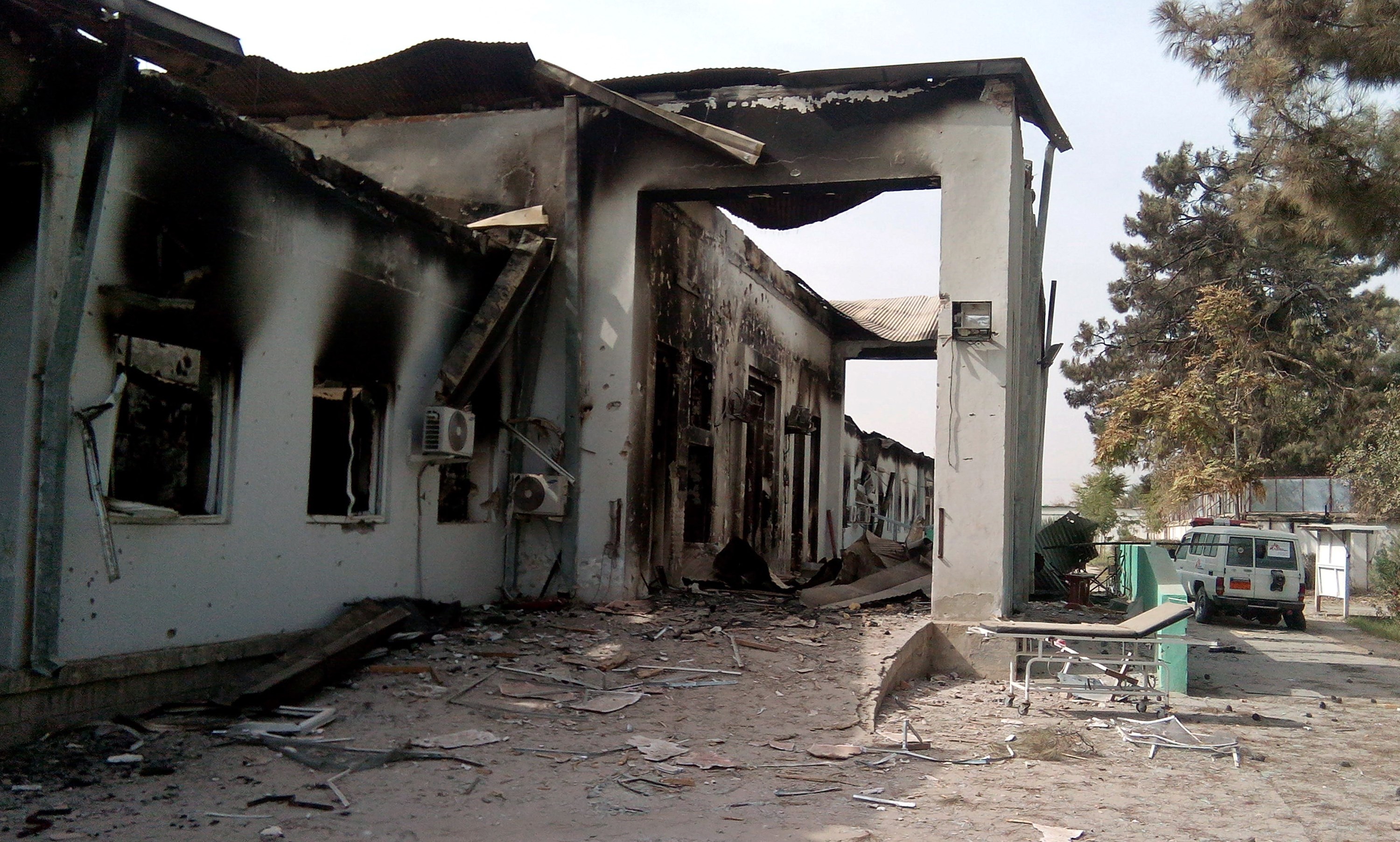U.S. reportedly relied on resentful Afghan commanders in Kunduz hospital bombing


The U.S. is still investigating what went wrong before an AC-130 gunship opened fire on a Doctors Without Borders (MSF) hospital last month, killing at least 30 people, but right after the airstrikes, Afghan national security adviser Hanif Atmar took full responsibility for the attack because "we are without doubt, 100 percent convinced the place was occupied by Taliban," according to notes from a European diplomat reviewed by The Associated Press. There is no evidence to back up that claim, and plenty — including eyewitnesses — that suggest it is not true.
The U.S. 3rd Special Forces Group called in the airstrike, but at the time they were under attack by Taliban forces at the Kunduz provincial governor's compound half a mile from the hospital, and therefore had no firsthand evidence of Taliban gunmen at the MSF facility, a former intelligence official tells AP, citing documents. In fact, AP reports, "there are mounting indications the U.S. military relied heavily on Afghan allies who resented the internationally run Doctors Without Borders hospital, which treated Afghan security forces and Taliban alike but says it refused to admit armed men."
The 3rd Group knew the hospital was treating patients, according to a daily log kept by a senior officer — which should have prevented the airstrike — but also believed that the Taliban was using the facility as a command center, AP reports. The log doesn't explain why the 3rd Group believed the hospital had been taken over by the Taliban, and unit members told Rep. Duncan Hunter (R-Calif.) they didn't know the target was a working hospital until after the attack. The unidentified former intelligence official said that the Afghan special forces had insisted it was a Taliban control center and urged it be destroyed.
The Week
Escape your echo chamber. Get the facts behind the news, plus analysis from multiple perspectives.

Sign up for The Week's Free Newsletters
From our morning news briefing to a weekly Good News Newsletter, get the best of The Week delivered directly to your inbox.
From our morning news briefing to a weekly Good News Newsletter, get the best of The Week delivered directly to your inbox.
"It's not clear exactly what the 3rd Group commander who directed the strike knew about the hospital, and why he made the decision to attack," AP says. "Nor is it known who in the chain of command reviewed and approved the decision, or what those people knew." Read more at The Associated Press.
A free daily email with the biggest news stories of the day – and the best features from TheWeek.com
Peter has worked as a news and culture writer and editor at The Week since the site's launch in 2008. He covers politics, world affairs, religion and cultural currents. His journalism career began as a copy editor at a financial newswire and has included editorial positions at The New York Times Magazine, Facts on File, and Oregon State University.
-
 Into the Woods: a ‘hypnotic’ production
Into the Woods: a ‘hypnotic’ productionThe Week Recommends Jordan Fein’s revival of the much-loved Stephen Sondheim musical is ‘sharp, propulsive and often very funny’
-
 ‘Let 2026 be a year of reckoning’
‘Let 2026 be a year of reckoning’Instant Opinion Opinion, comment and editorials of the day
-
 Why is Iran facing its biggest protests in years?
Why is Iran facing its biggest protests in years?TODAY’S BIG QUESTION Iranians are taking to the streets as a growing movement of civic unrest threatens a fragile stability
-
 Nobody seems surprised Wagner's Prigozhin died under suspicious circumstances
Nobody seems surprised Wagner's Prigozhin died under suspicious circumstancesSpeed Read
-
 Western mountain climbers allegedly left Pakistani porter to die on K2
Western mountain climbers allegedly left Pakistani porter to die on K2Speed Read
-
 'Circular saw blades' divide controversial Rio Grande buoys installed by Texas governor
'Circular saw blades' divide controversial Rio Grande buoys installed by Texas governorSpeed Read
-
 Los Angeles city workers stage 1-day walkout over labor conditions
Los Angeles city workers stage 1-day walkout over labor conditionsSpeed Read
-
 Mega Millions jackpot climbs to an estimated $1.55 billion
Mega Millions jackpot climbs to an estimated $1.55 billionSpeed Read
-
 Bangladesh dealing with worst dengue fever outbreak on record
Bangladesh dealing with worst dengue fever outbreak on recordSpeed Read
-
 Glacial outburst flooding in Juneau destroys homes
Glacial outburst flooding in Juneau destroys homesSpeed Read
-
 Scotland seeking 'monster hunters' to search for fabled Loch Ness creature
Scotland seeking 'monster hunters' to search for fabled Loch Ness creatureSpeed Read
